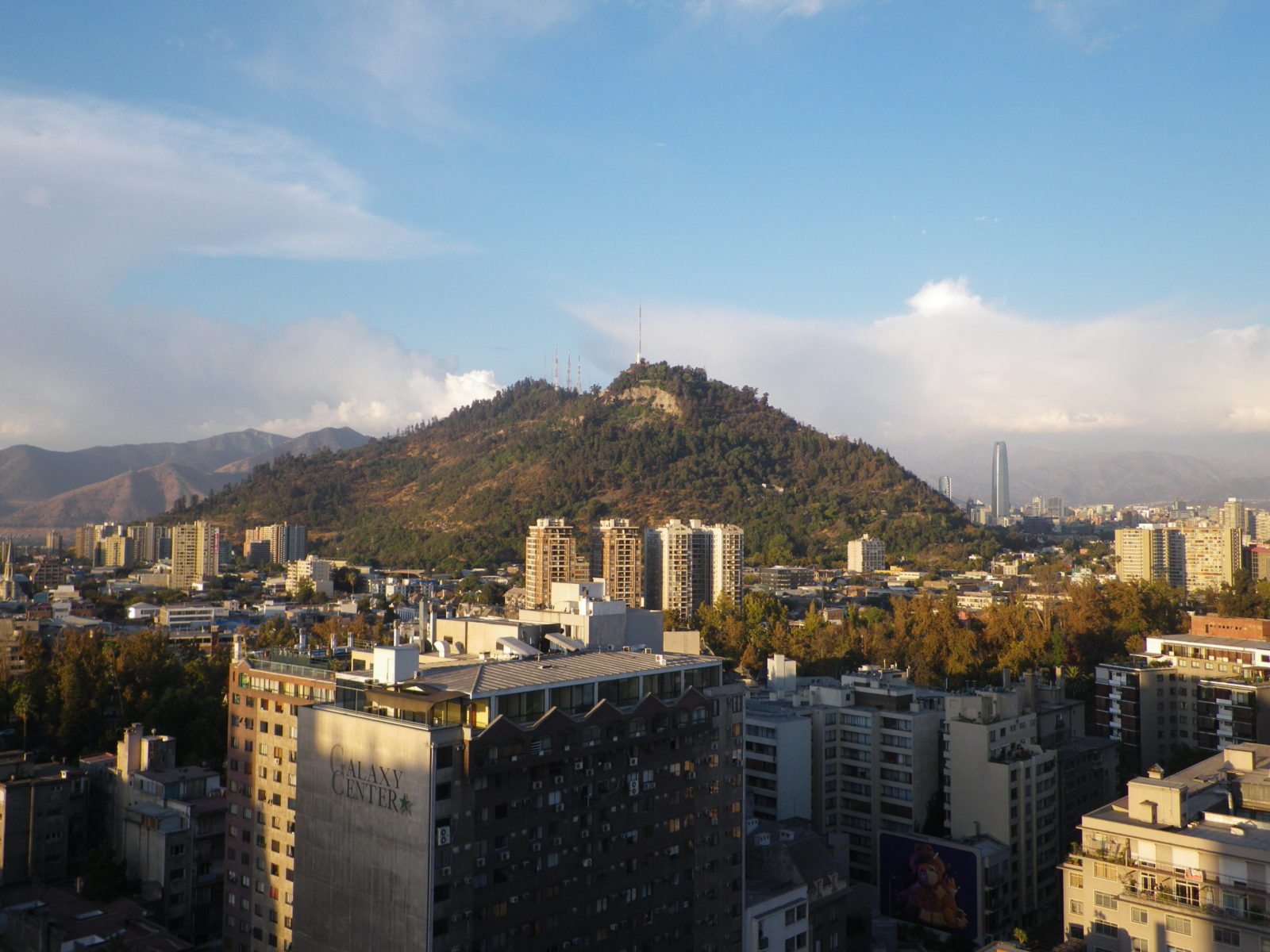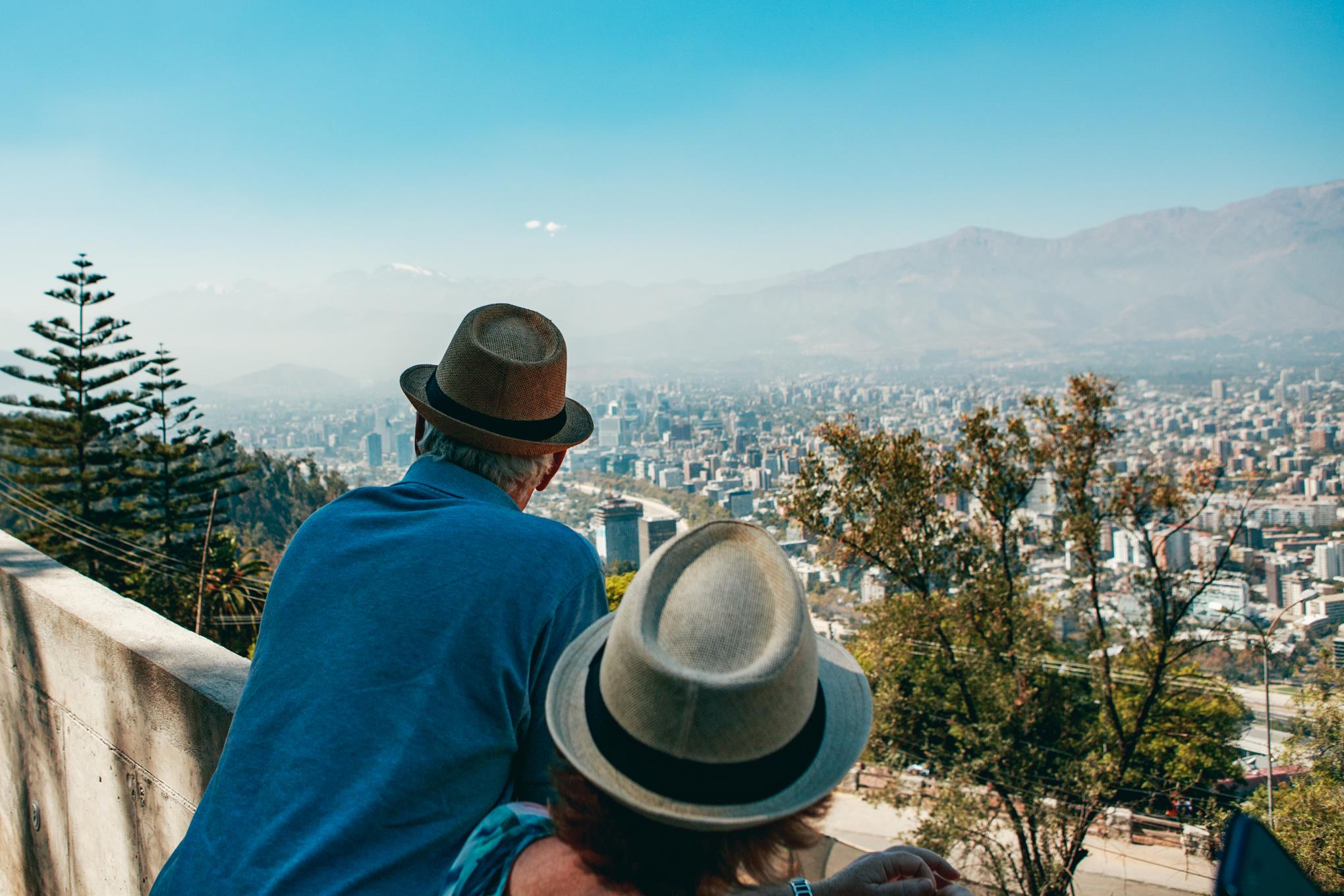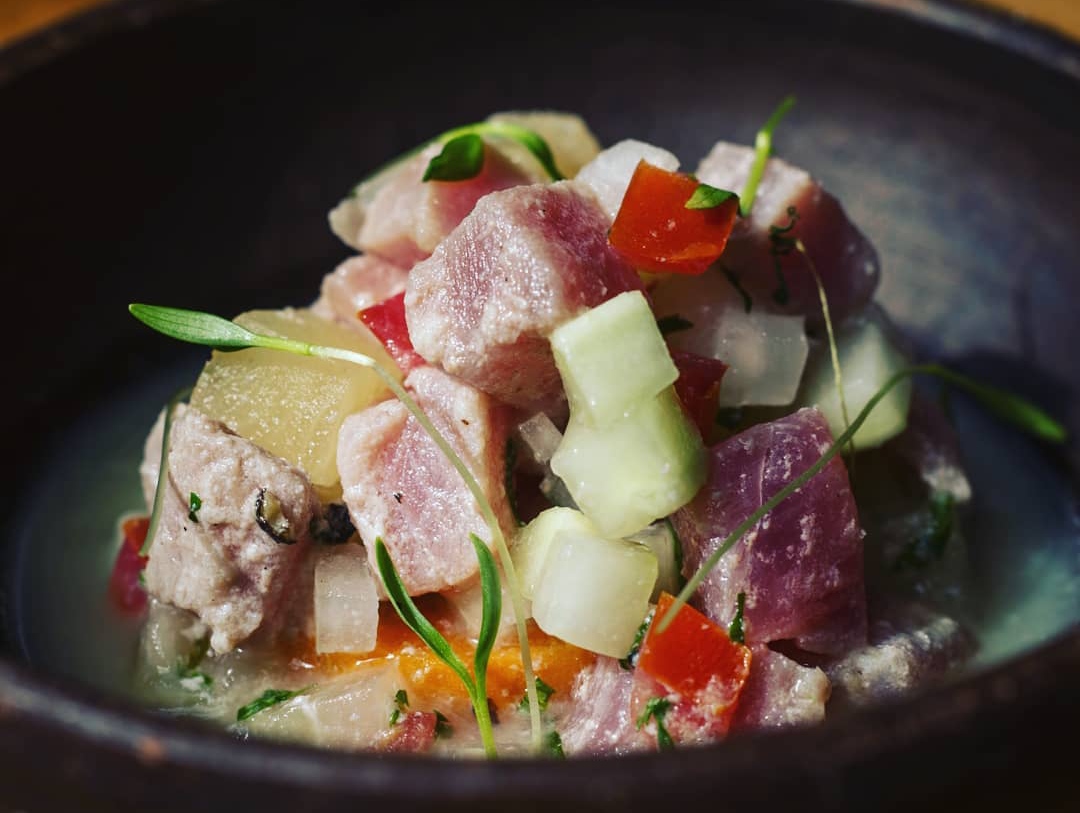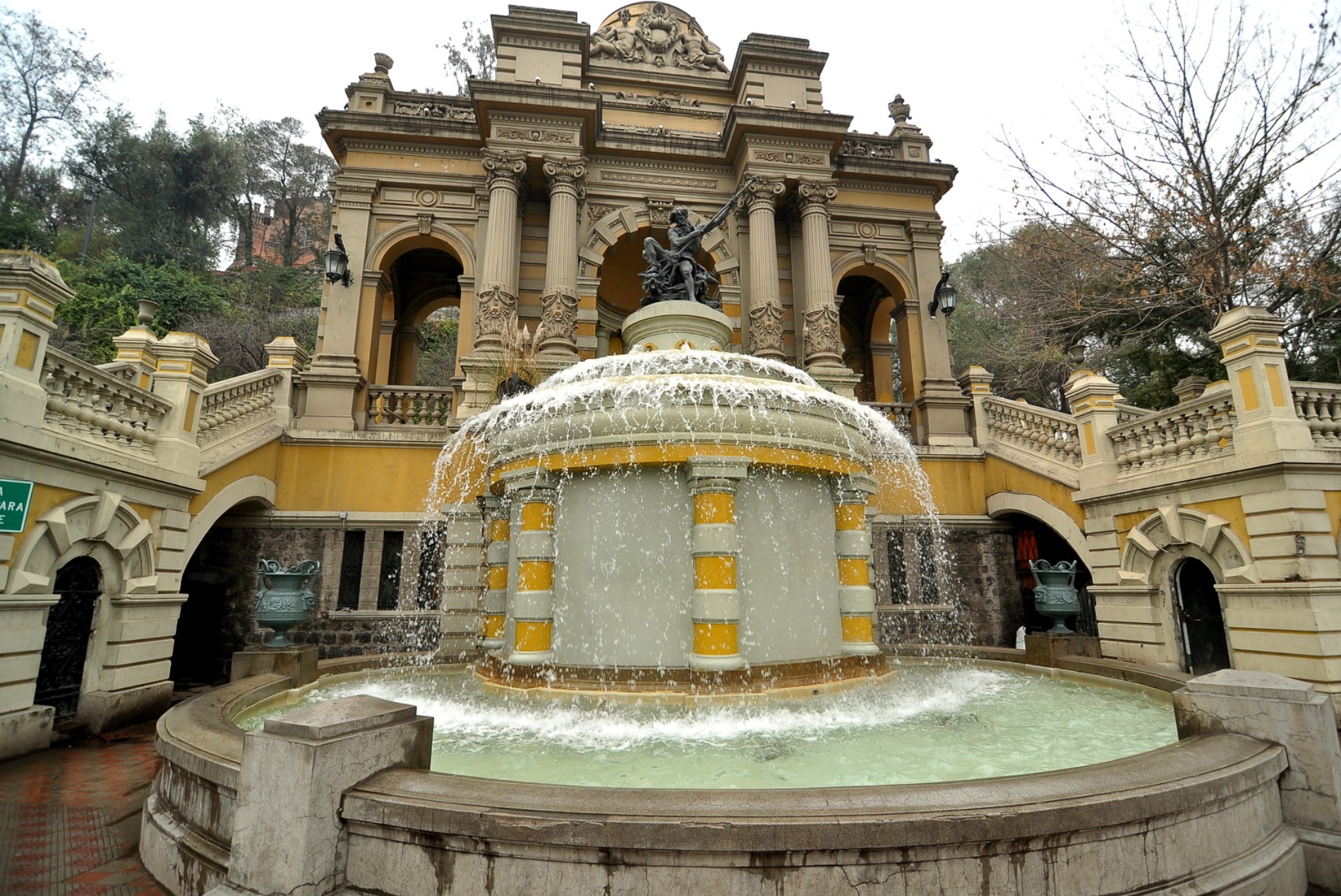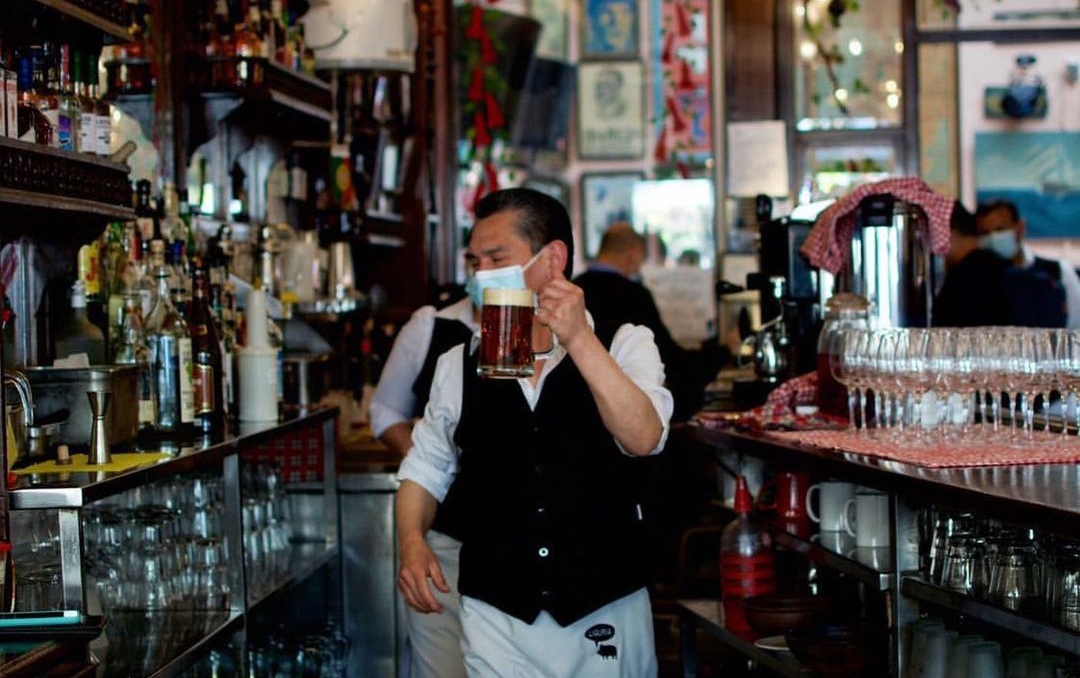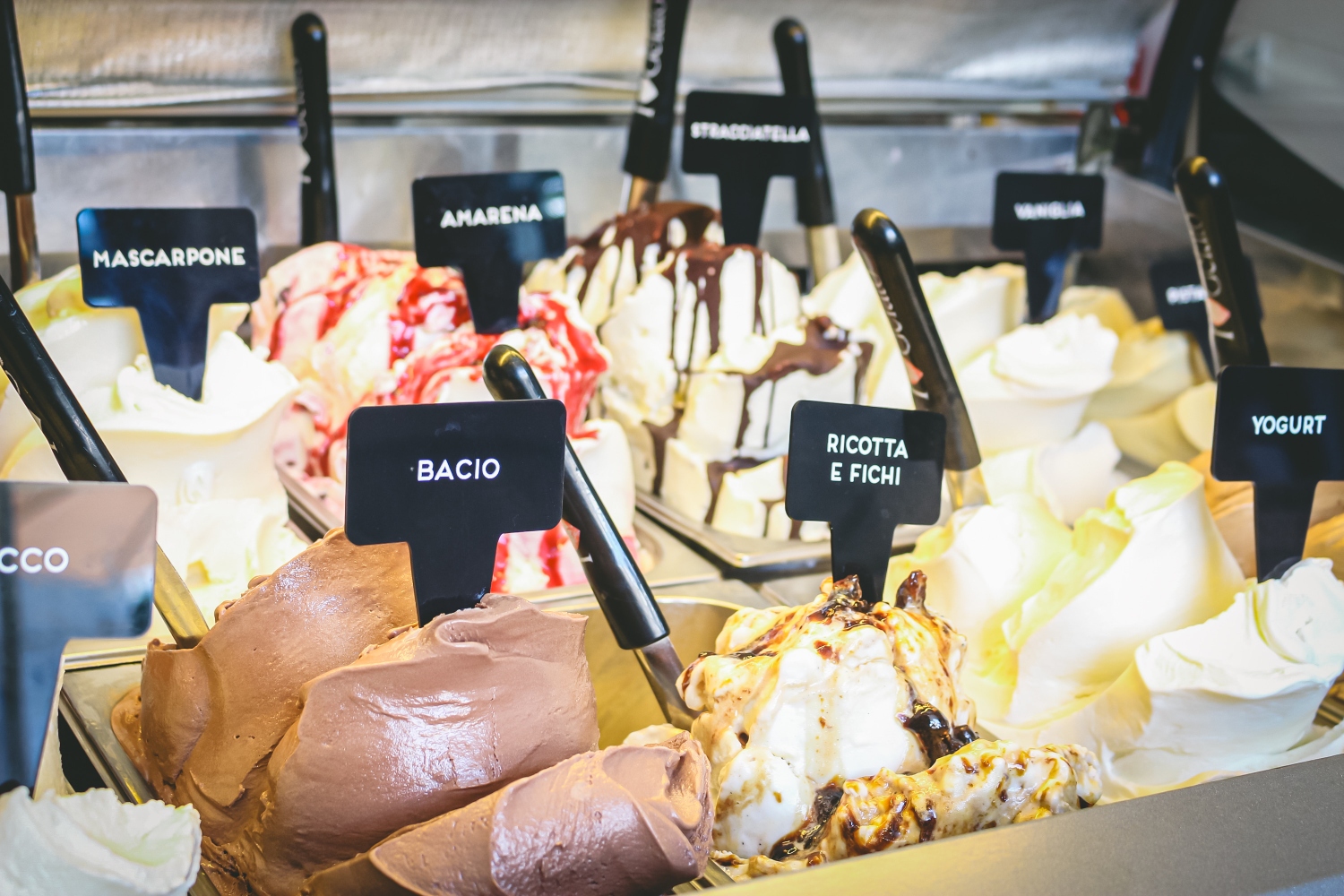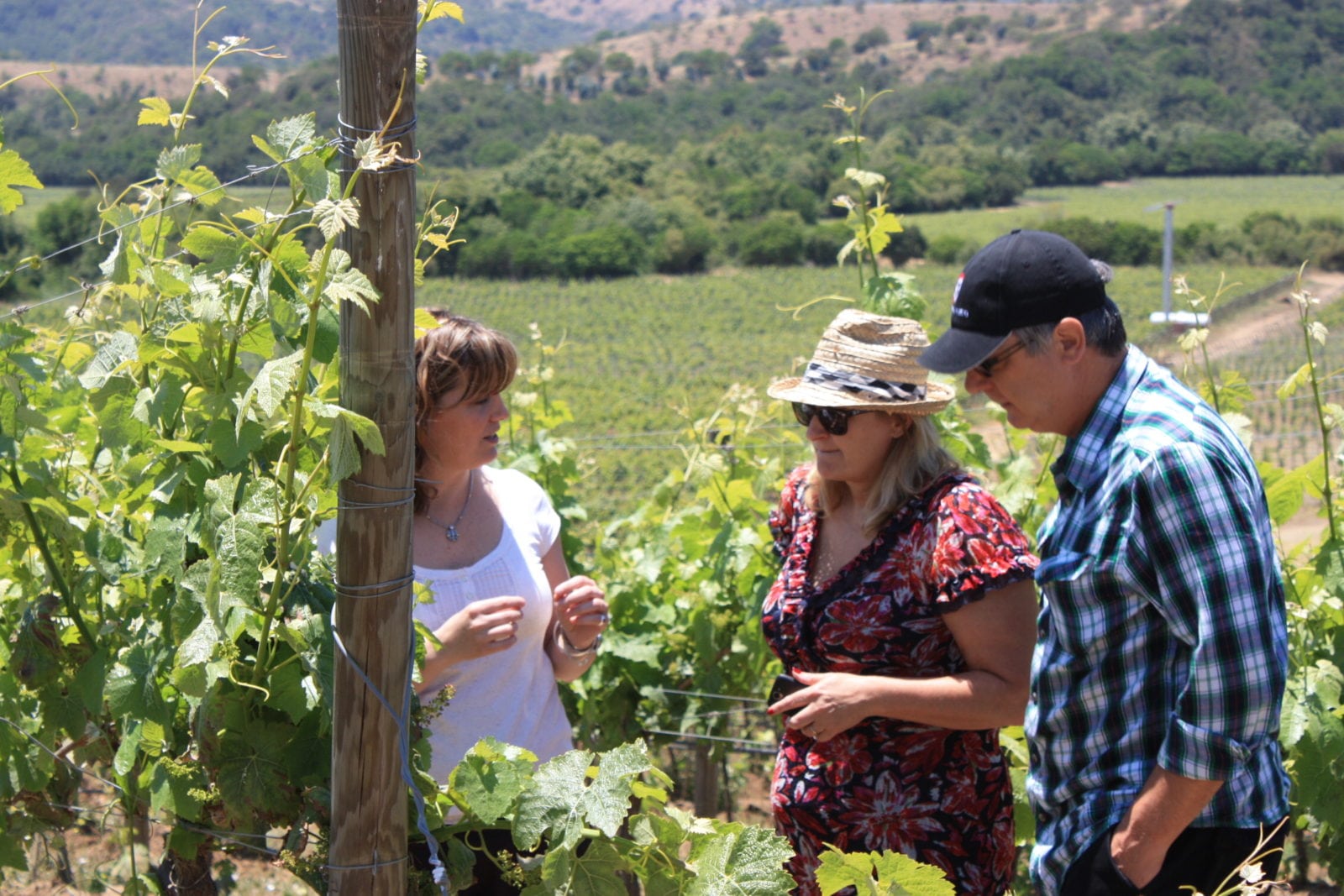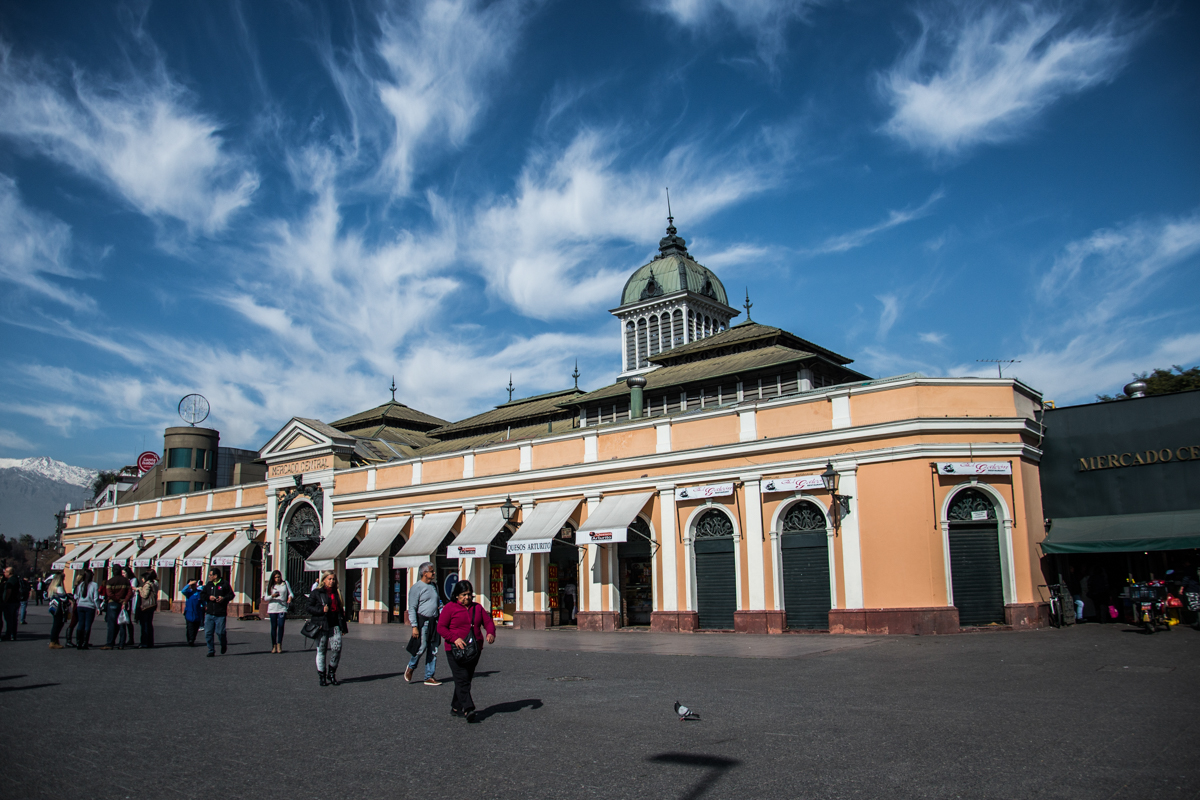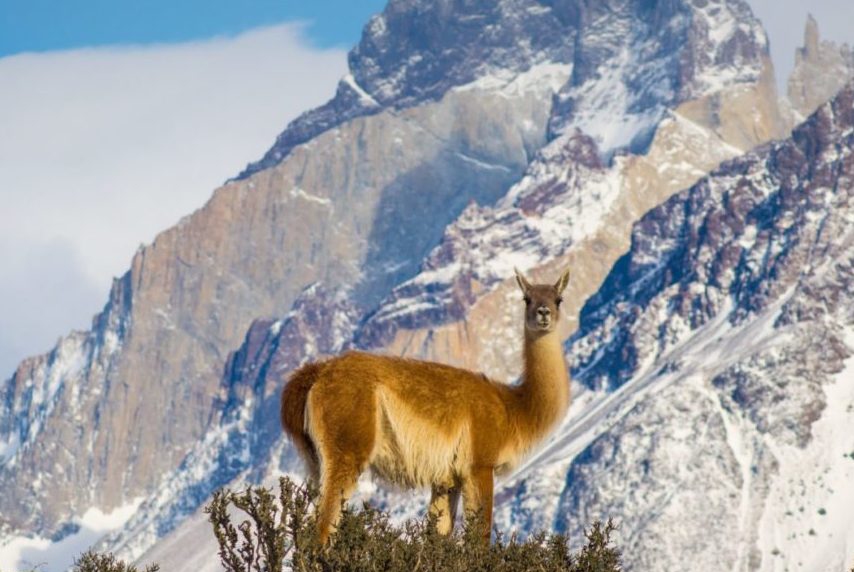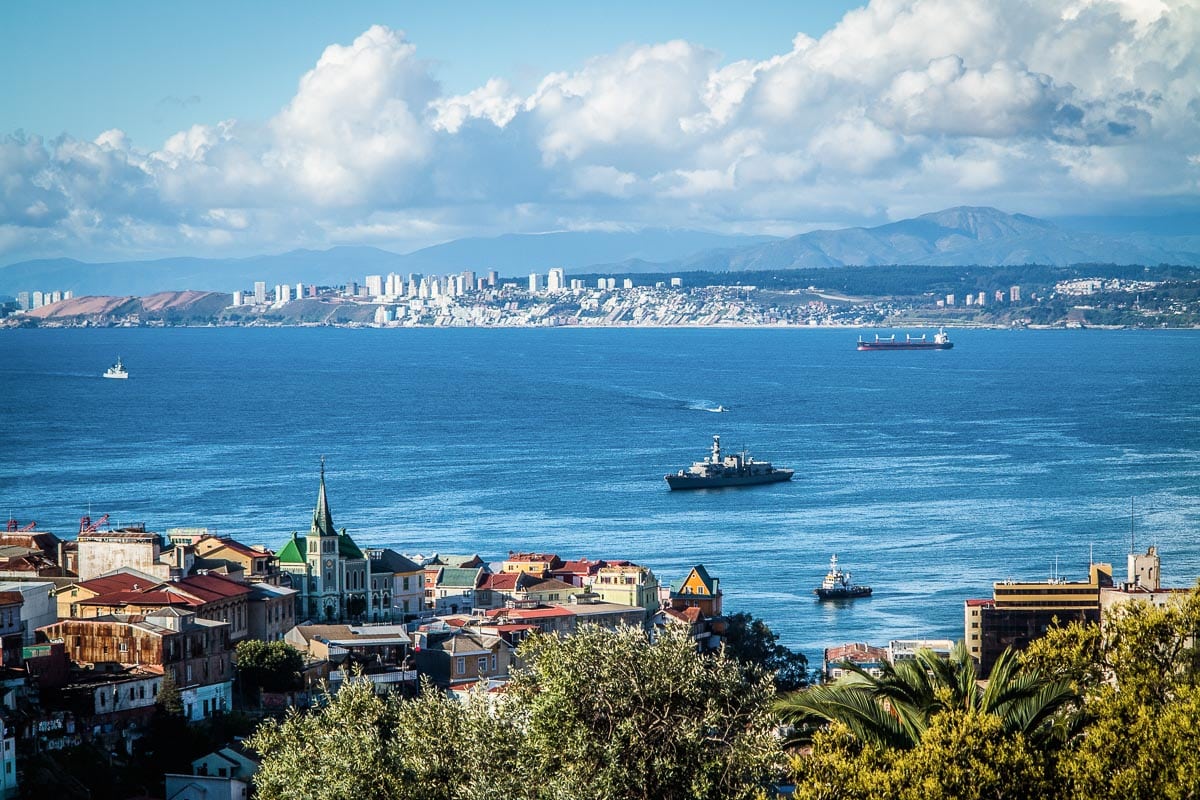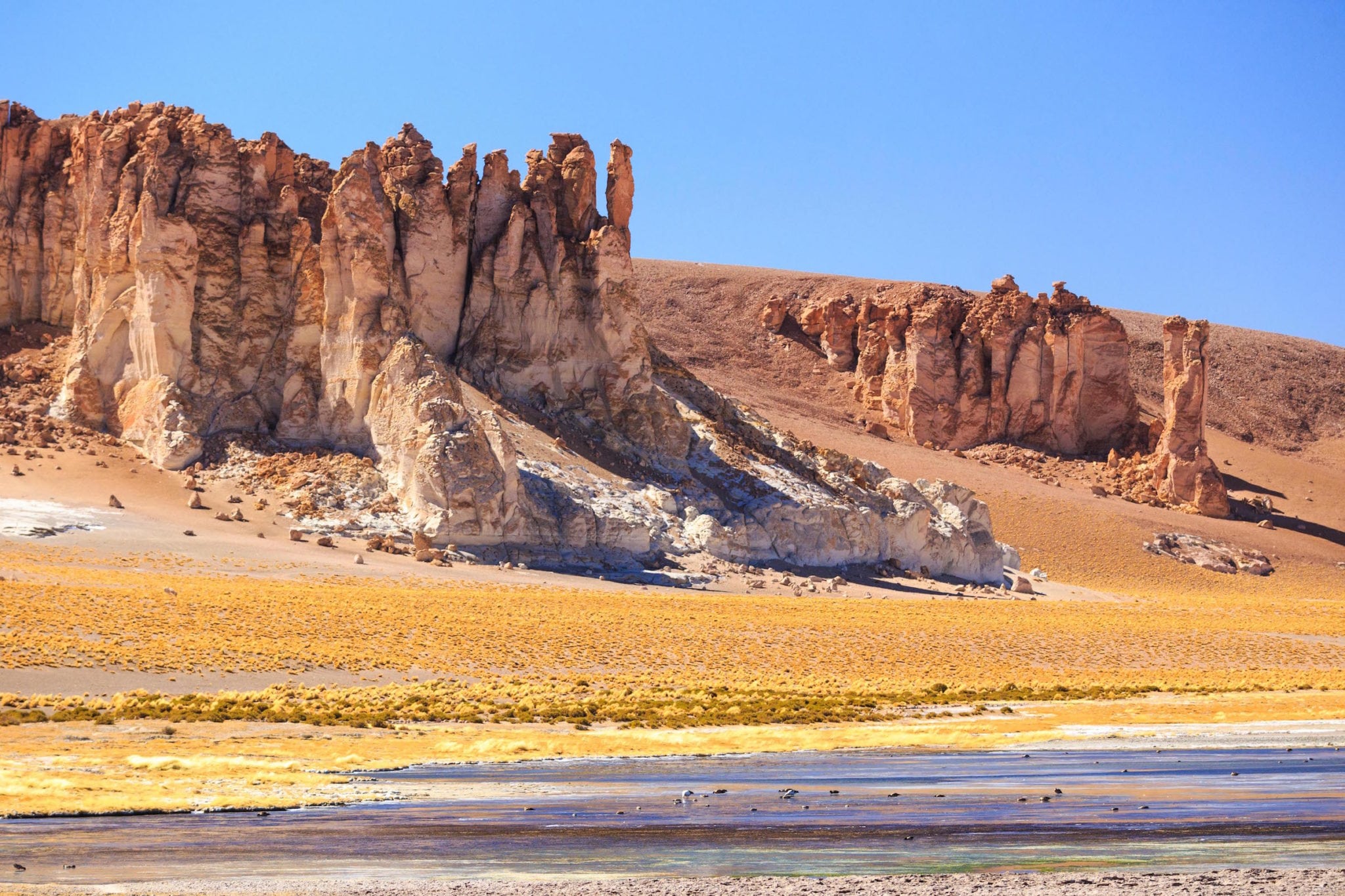Santiago, the capital city of Chile, bursts at the seams with its vibrancy, culture and diversity. There’s so much to see here that you could easily spend a week and still not see it all.
The typical highlights of the city are its museums that delve into the history and art of Chile, the Santa Lucía hill that serves as an artistic green oasis in the middle of a concrete jungle, or iconic landmarks like the Moneda, Plaza de Armas and Mercado Central. But if you find yourselves in Santiago with a little more time after you’ve seen those, you might be looking to head a little more off the beaten path or to find the locals’ favorite locations to discover the ‘real’ Santiago!
Barrio Bellavista
Barrio Bellavista is one of the more bohemian neighborhoods of Santiago. Here you’ll find buildings painted with impressive murals that reflect Chile’s nature, people, and culture. You’ll also find some real hidden treasures to explore.
Teatro Mori – Nestled in this vibrant neighborhood, the Teatro Mori stands as a cultural gem in Santiago. An intimate theater, it’s a haven for art enthusiasts, offering a delightful blend of avant-garde performances and classic productions. With its eclectic lineup, ranging from thought-provoking plays to entertaining comedies, Teatro Mori promises an unforgettable night out and your gateway to the enchanting world of Chilean performing arts!
San Cristobal Hill – We can’t say that the hill is a hidden treasure – you can see the statue of Christ at its summit from most of central Santiago! But walking or cycling up this hill is certainly underrated. It takes 2-4 hours to walk up the hill. It’s a fairly easy route but you’ll be climbing uphill most of the time. At the top and various viewpoints along the way, you’ll be able to take in panoramic views of the sprawling city and its surrounding Andean mountains. If you’re not afraid of heights, hop on the cable car at the top to come back down!
La Chascona – The former home of Pablo Neruda, one of Chile’s most iconic poets and politicians, was converted into a museum. Built in 1953, Neruda dedicated the house for his secret lover at the time, Matilde Urrutia, naming it after her wild chestnut hair. Although the house passed through turbulent times, including being vandalized and flooded, Urrutia dedicated the last years of her life to reviving and conserving the property. Today, it pays homage to the poet and the arts, featuring paintings by Chilean and foreign artists and conserving Neruda’s possessions.
Where to eat:
Kross Bar – If you enjoy an artisanal beer, Kross Bar is a must. Offering a range of international award-winning ales, stouts, and even whisky, Kross is a great place to go to enjoy a refreshing beer, tasty finger food, and a lively and informal atmosphere.
Tamango – Alternatively (or perhaps the next stop on a beer tour!), sample some of the 12 beers at Tamango brewery’s ‘House of Beer’. For the non-beer drinkers, their gin ‘Guayabera’ is definitely recommended too!
Ciudad Vieja – If there’s one thing Chileans are good for, it’s a sandwich. Forget your boring sliced bread with butter, try one of these delicious and giant bread rolls, slathered with mayonnaise, homemade tomato sauce, fresh green avocado, slices of juicy tomato and an array of meats for a mouthwatering bite!
Ootoya – In the true metropolis style of Santiago, venture out of the Americas and sample the delicious ramen and noodles of Ootoya. Don’t forget to try their sushi and gyoza dumplings too!
Sarita Colonia – This restaurant celebrates the best of Peruvian cuisine – inventive, creative, and most importantly, mouthwateringly flavorsome, try these dishes from the earth and sea, including ceviche, lomo saltado (stir-fried beef), and slow-cooked rib. If you’ve got a sweet tooth, be sure to try the classic Suspiro a la Limeña for dessert!
Peumayén – Taste the flavors of the whole of Chile at this one restaurant. Specializing in the traditional dishes of Chile’s indigenous peoples, Peumayén offers tasting menus that will take you through from the grains and corn of Chile’s northern Andes to the roasted meats and potatoes of the wild southern plains.
Barrio Lastarria
GAM Cultural Center – Situated in the heart of Santiago de Chile, the GAM Cultural Center is a vibrant tapestry of artistic expression and cultural dynamism. This hub of creativity, nestled within the bustling cityscape, offers a kaleidoscope of events and exhibitions, from cutting-edge contemporary art to traditional performances. Wander through its modern architecture, and you’ll find yourself immersed in a world where music, theater, and visual arts collide in perfect harmony. GAM stands as a testament to Santiago’s commitment to fostering a rich cultural landscape, inviting visitors to explore, engage, and be captivated by the diverse offerings within its walls.
Discover the streets of the area – Spend some time wandering along the streets of the neighborhood as you uncover the beautiful architecture, unofficial street markets, and restaurants and cafes of the area.
Climb Cerro Santa Lucía – The Santa Lucia Hill is a classic in Santiago. Visited by locals and tourists, this 70m-high mound is a remnant of a 15-million year old volcano! These days, it is adorned with beautiful facades, statues, gates, and fountains, and offers a great viewpoint looking over the center of Santiago!
Where to eat:
Boca Nariz – This is a wine-lovers favorite, and with good reason! Its name translates to ‘Mouth Nose’, honoring the senses that grant us the joy of food and wine. Their menus are carefully designed to pair the dishes with their exquisite wine offerings, delighting the senses and giving you a true taste of Chile.
Liguria – Sample some of the traditional flavors of Chile in this typical restaurant. With walls decorated with pictures, paintings, and tableware reflecting Chile’s varied and complicated history, you’ll feel fully immersed in your destination as you try the stews, roasted meats, and fried fish.
Barrio Italia
Walk along Avenida Italia and Condell – Ponder through the cobblestone streets of this Santiago neighborhood that effortlessly marries vintage charm with contemporary flair. You’ll discover an array of boutiques, antique shops, and cozy cafes housed in beautifully restored mansions as you meander through this treasure trove for those seeking unique finds, from handmade crafts to retro furnishings. Take your time walking through these streets, where local artisans and designers showcase their talents in a thriving bohemian atmosphere.
Comedy – Put your Spanish to the test at one of Santiago’s most iconic comedy bars. Pick up a bite and a drink here too!
Kadampa – Find your zen and learn about the meditation techniques and teachings of modern Kadampa buddhism. With meditation classes, lectures, and talks, this center offers a range of activities for meditations lovers and newbies alike.
Where to eat:
True to its name, Barrio Italia is home to a some of the best pizzas and gelato you can find Santiago!
Galpón Italia – This outdoor bar and restaurant has a distinctive dynamic foodtruck atmosphere. Their menu varies from burgers to salads and ceviches, but their grilled steaks and fish are certainly recommended!
In Pasta – This restaurant rings the flavors of Italy to Barrio Italia, with a range of antipasti, salads, and of course pasta dishes. Be sure to finish your meal off with a sip of limoncello and a spoonful of creamy tiramisu!
In Fiore – If you’re visiting Santiago in the summer heat, you’ll be grateful for a refreshing gelato from In Pasta’s cafe, In Fiore! You can pick up light bites, pastries and a delicious coffee here too.
Da Noi – A humble but iconic Italian restaurant, enjoy a hearty plate of pasta and sauce or a baked dish on the streetside amongst typical red-and-white-check tablecloths.
Alleria – Alleria’s wood-fired pizzas will hit that pizza craving. Their tantalizing combinations of dough, tomato sauce, and mozzarella accompanied by a range of meats and veggies. If that’s not for you, the risottos and pastas are sure to please too!
Siam Thai – If you want to step out of Italy for a brief moment, head to Thailand! Enjoy the fresh flavors of lime, coconut and chilli with one of Siam Thai’s curries, soups, salads, or Chef’s recommendations.
Head out of Santiago for the day
Casablanca Valley – Nestled between the coastal mountains and the Pacific Ocean, Casablanca Valley unfolds as a picturesque wine lover’s paradise just a short drive from Santiago. Famous for its cool maritime climate, this valley has become a renowned wine region, particularly celebrated for its crisp white wines, notably Sauvignon Blanc and Chardonnay. The vineyards here, like Viña Casas del Bosque, Viña Matetic, and Bodegas Re, are not only a treat for the palate but also a feast for the eyes, offering stunning vistas of rolling hills and neatly lined grapevines against a backdrop of coastal mist. A day trip to Casablanca promises a delightful blend of wine-tasting, scenic beauty, and a peaceful escape from the bustling city.
Maipo Valley – Venture into the historic Maipo Valley, an enchanting wine region that traces the Maipo River as it winds through the Andean foothills. Renowned as one of Chile’s oldest and most traditional wine-producing areas, Maipo is celebrated for its robust red wines, particularly Cabernet Sauvignon. The vineyards here, like Viña Santa Rita, Viña Haras de Pirque, and Viña El Principal, are surrounded by a rich tapestry of landscapes, from lush greenery to the rugged mountains, providing a sensory journey that goes beyond the wine itself. A visit to Maipo Valley not only offers wine enthusiasts a chance to savor bold flavors but also an opportunity to soak in the region’s cultural heritage and breathtaking natural beauty.
Cajón del Maipo – For those craving an adventurous escape, Cajón del Maipo beckons just southeast of Santiago. This stunning canyon is a haven for outdoor enthusiasts, offering a playground of activities amidst awe-inspiring scenery. Follow the Maipo River as it carves its way through towering cliffs, leading to natural wonders like the Embalse El Yeso reservoir and the El Morado Natural Monument. Whether you’re into hiking, horseback riding, or simply relishing the tranquility of nature, Cajón del Maipo provides a refreshing retreat. After a day of exploration, unwind with the locals in the charming mountain villages, savoring traditional Chilean cuisine and connecting with the region’s warm hospitality.
Speak to your Ecochile representative for more tips or to book a tour or entrance tickets to any of the above.
